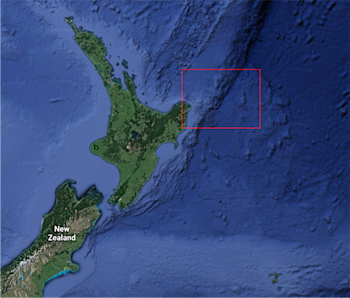
M7.3 East Cape Earthquake - Aftershock Forecasts
Updated: Fri Sep 30 2022 10:00 AM
While no one can scientifically predict earthquakes, we can provide forecasts of future earthquakes using computer models that are updated as an earthquake sequence continues. Forecasts based on the 5 March 2021 East Cape Earthquake are in the table below.
This forecast only considers the M7.3 East Cape earthquake. For scenarios that include the M8.1 Kermadec event, please see here.
Given that the earthquake occurred some distance offshore, we could not detect the smaller earthquakes that we usually use in our hybrid earthquake forecasting model (see below). Therefore, we based our forecast on aftershock models only. We used an average from other New Zealand aftershock sequences combined with a global model for subduction zone aftershock occurrence. As time goes by, aftershocks of this earthquake are a diminishing proportion of the total seismicity in the region. Given that the other components of the hybrid model do not extend that far offshore, we do not intend to update this forecast.
View the hybrid earthquake forecasting model here:
The two aftershock models used provide the spread of the average number and the probabilities in the table below. The range covers the 95% confidence bounds including both models. The forecast applies to the region around the mainshock as indicated by the box on the map below. Earthquakes can and do happen outside this region, but the box represents the most likely area for aftershocks in this sequence.| M5.0-5.9 | M6.0-6.9 | M≥7.0 | |||||||
| Average number | Range * | Probability of 1 or more | Average number | Range * | Probability of 1 or more | Average number | Range * | Probability of 1 or more | |
| within 365 days | 5-6 | 1-11 | >99% | 0.5-0.6 | 0-2 | 40-45% | 0.05-0.06 | 0-1 | 5-6% |
Are you prepared?
Remember Long or Strong, Get Gone: If you are near the coast and feel a strong earthquake that makes it hard to stand up OR a weak rolling earthquake that lasts a minute or more move immediately to the nearest high ground or as far inland as you can, out of tsunami evacuation zones.
The National Emergency Management Agency (NEMA) has a great website with information on what to do before, during and after an earthquake.
Prepare your home. Protect your whānau.
There’s a lot we can do to make our homes safer and stronger for earthquakes. Toka Tū Ake EQC’s website has key steps to get you started.

